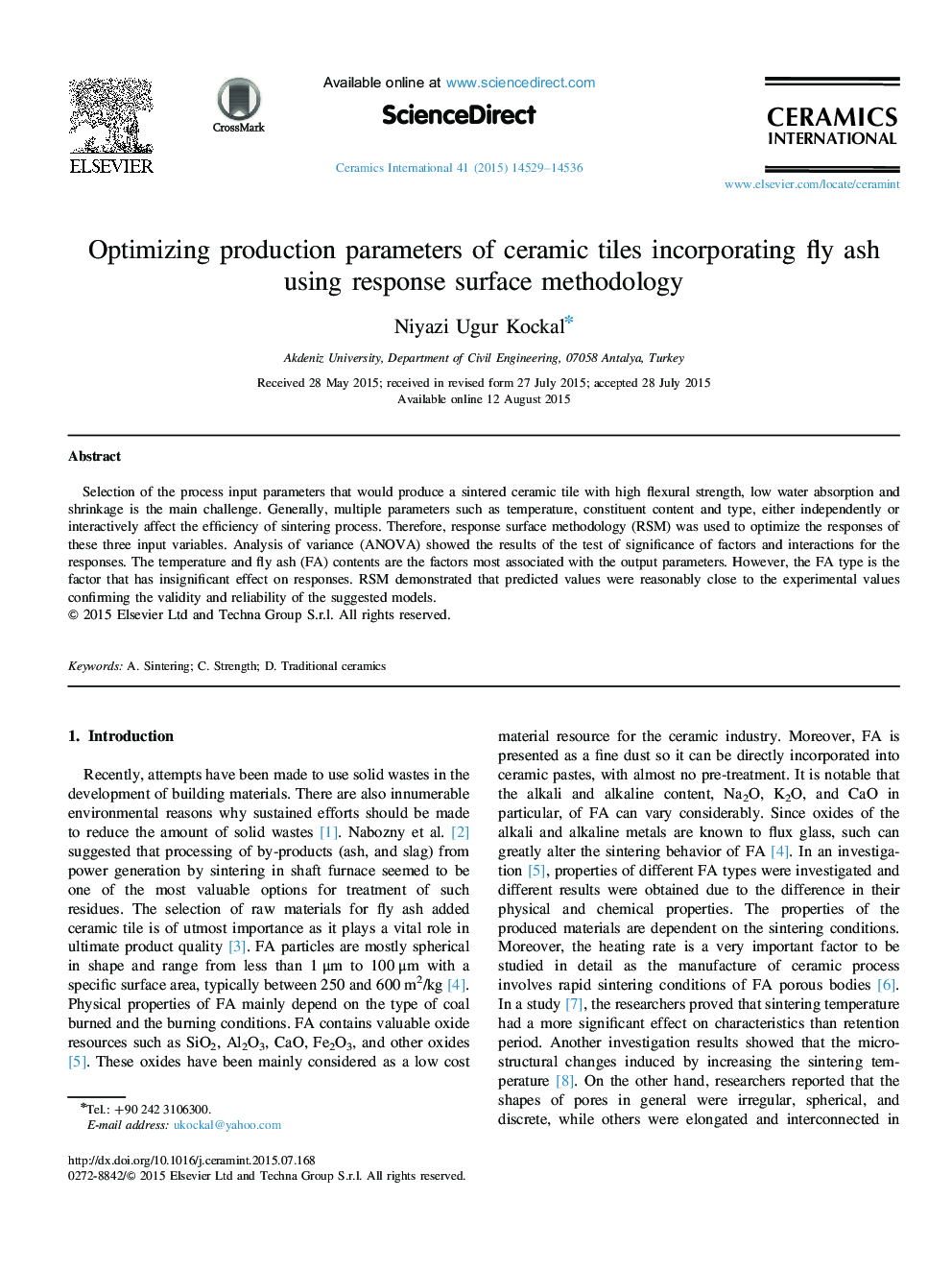| Article ID | Journal | Published Year | Pages | File Type |
|---|---|---|---|---|
| 1459372 | Ceramics International | 2015 | 8 Pages |
Selection of the process input parameters that would produce a sintered ceramic tile with high flexural strength, low water absorption and shrinkage is the main challenge. Generally, multiple parameters such as temperature, constituent content and type, either independently or interactively affect the efficiency of sintering process. Therefore, response surface methodology (RSM) was used to optimize the responses of these three input variables. Analysis of variance (ANOVA) showed the results of the test of significance of factors and interactions for the responses. The temperature and fly ash (FA) contents are the factors most associated with the output parameters. However, the FA type is the factor that has insignificant effect on responses. RSM demonstrated that predicted values were reasonably close to the experimental values confirming the validity and reliability of the suggested models.
